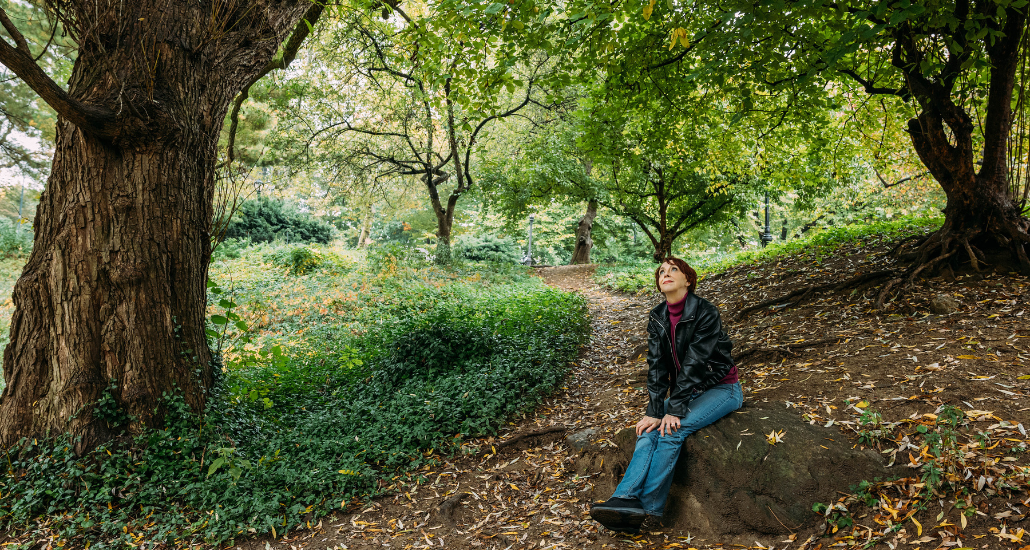Don’t you just hate feeling stuck? I do. I used to hate immobility so much that I ran everywhere and barely slept at night. It worked!
Until I was about 18. Then my body broke. I developed chronic pain that left me pretty much immobile for the next decade or so.
Happily, my feeling of being totally stuck in pain was so horrible I decided I’d do anything to feel better—even meditation, which had always sounded to me like the opposite of a good time. I hated it at first, but gradually it started to help.
And then one day, I dropped into a deep, sweet stillness that felt like absolute freedom.
Ironically enough, the best and worst times of my life both happened when I wasn’t moving at all.
We all have access to these two kinds of motionlessness: being stuck or being still. They’re built into our brains. The problem is that our culture drives us toward the “stuck” worst-of-times, while steering us away from the “still” best-of-times.
The Stuckness/Stillness in Our Heads
The two halves of our brains (the left hemisphere and the right) do different things. When used together, they help us deal with the logistical world, with its stress, tasks, and deadlines, while also experiencing joy and meaning.
Our culture, however, is out of balance. It rewards us for using our left hemispheres, which handles things like language, logic, timekeeping, and solid material stuff. The right hemisphere is dreamier, more imaginative, always tuned in to our physical senses and the present moment.
I see how biased our culture is when I ask clients to stop focusing on verbal thoughts and pay attention to what their bodies are feeling. They often look at me as though I’ve just put on an aluminum-foil hat and offered to cast a spell. “That’s just too woo-woo for me,” they say.
They’ve been taught that logical thinking (left-brain dominance) is cool and classy, while feeling what’s actually happening in and around their bodies (right-brain dominance) is, in a word, stupid.
The problem with this is that using only the left hemisphere leads to anxiety and stuckness. We have to be imaginative and creative to find the stillness that sets us free.
The Hall of Mirrors
The reason left-hemisphere thinking gets stuck is a strange one: The left side of our brain believes—really really really believes—that anything outside its own perspective doesn’t exist.
I’m going to say that again because it’s important: The part of your brain that feels anxious and stuck is also the part that will tell you that nothing is real except the anxiety and stuckness you feel.
The right side of the brain doesn’t act like this. On the contrary, it accepts everything—including the left hemisphere’s perspective—because it feels connected to everything in the universe.
Oliver Sacks, the famous neurologist, wrote about his own discipline, dismissing the right-hemisphere perspective as “primitive.” He commented that “With neurology, if you go far enough with it, and you keep going, you end up getting weird. If you go a little further, you end up in spirit.”
I assure you, that kind of talk is a great way to get mocked in public.
And it’s totally worth it.
How to Go From Stuckness to Stillness
If you’re feeling stuck—and you’re willing to look weird in order to be free—you can rev up the right side of your brain any time. You just have to start doing things that require right-hemisphere thinking.
Meditating, grounding into your physical senses, doing anything artsy (doodling, humming) can rev up your creative right brain.
Or try this:
If you’re reading this on a computer, phone, or printed page, hold the surface exactly where it is now. Then, switch your attention away from the written surface to the space between your eyes and that surface.
That’s right. Pay attention to the space between things, not the things.
This only seems strange because no one in our culture is taught to do it—just as we’re taught that thinking is more respectable than feeling, and science is more worthwhile than art. But if you try the simple steps above, you’ll become more creative, more able to find your way out of apparent stuckness.
Best of all, you’ll begin to touch that astonishing, healing stillness at the center of your being.
If this is a relief to you—it was a HUGE relief to me—you’ll probably want to repeat it. In fact, you may start accessing stillness for the sheer joy of it. Then, as a side effect, you’ll start to live differently. More creatively. More joyfully. More confident that stuckness is an illusion you’ve been taught to believe, and stillness is your way to freedom.
Discover additional articles, videos, podcast episodes, and mini-books in Martha’s series on anxiety on The Beyond Anxiety Hub.
Join the mailing list to be notified when Martha releases a new article.











2 comments
AT 3:44 PM
AT 7:18 PM